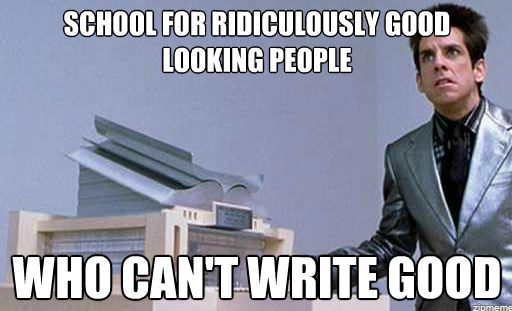As many will say on a Monday when they can’t seem to speak correctly and need their morning coffee, “words are hard.” However, at Ketner Group, content development is an essential part of our DNA so we welcome the challenge. We’re proud to be the stewards of the words, the prose pros and the scribe tribe. When it comes to putting our clients on the map, we use our writing skills to give them a voice and ensure their stories rise above the noise through strategic, engaging content.
Although we fancy ourselves veterans of the craft, the writing process can be tough – especially when it comes to getting started, staying focused and tackling multiple projects in a timely manner. To offer our faithful readers some writing tips for building exceptional content, I asked some of the Ketner Group team for their most effective processes.
Getting Started With a Brain Dump
Sometimes it’s easier to start with an abundance of information and work your way down. As such, when I start a writing project, I dump all of the relevant collateral and resources I can get my hands on into a document and then begin chiseling away. This helps me find the story and craft it into a cohesive and impactful piece.
After including a plethora of information into her document, Mikaela likes to create headline and subheads first (of course, they’re subject to change and most of the time they do) to get a good starting point and a way to stay on track while writing. She also will write a topic sentence for her own reference before she starts digging into the content to help stay on track and prevent getting off topic. Meanwhile, Catherine takes a creative angle to keep things fresh and engaging by starting her intros with a fun theme or quote that will guide her throughout the piece – this process can be seen in full force in her recent Forbes article.
To Outline or Not to Outline
It’s the classic question that we all face in our careers – as certain as death and taxes. Some of us like to develop a full outline initially while others just get writing. In fact, in a poll of the entire KG team, we’re split right in the middle – half of us outlining, half opting not to. Kirsty finds value in it for certain projects, especially while writing a webpage, where she decides what she wants to write in a more visual manner. Once the outline is done, she usually lets it sit for a day or two, allowing her to come back with a fresh mind, and begins fleshing out the content and editing directly from the outline.
Perfect Timing
Many might say, there’s no better time than the present…but that doesn’t always work when we have countless priorities at once. Finding the right moment to begin your writing project isn’t always easy. Some of us write better at different times of the day so it’s important to find what time is right for you. For example, if other projects are getting in the way, make sure you knock those out first and set time aside on days when you aren’t as busy such as Friday afternoons, early mornings or whatever works for you.
While some work better under a strict deadline, setting short term milestones can help others who are having trouble keeping the content development ball rolling and want to avoid being overwhelmed right before a deadline. This includes creating short to-dos with deadlines throughout the week. For example, plan for your outline to be completed by Tuesday, draft on Wednesday, send colleagues for review on Thursday and send to client by Friday.
Background Noise
For those of us who need noise in the background, the most effective way to stay focused is listening to certain types of music. Amanda will often listen to white noise, instrumental music and brown noise. I tend to listen to instrumental music like jazz (John Coltrane’s album “A Love Supreme” is a great one), foreign (groups singing in another language, such as Tinariwen and Shintaro Sakamoto) and anything with a driving rhythm or R&B (lately Solange, Nilüfer Yanya and Blood Orange but William Onyebor, Fela Kuti and Talking Heads are always classics for me).
However, my go-to and most effective song is 45:33 by LCD Soundsystem. The almost 46-minute song, commissioned by Nike for runners, keeps me focused through its ebbs and flows and acts as a timer so I know it’s time to focus for that period of time.
Other Writing Tips from the KG Team:
- Eliminate distractions: Close Outlook, Slack, iMessage and put your cell phone away.
- Set a timer: Crank out content for a set amount of time (perhaps 30-45 minutes). Then you can allow yourself a 10-15 minute break to check email, scroll through Twitter, grab a snack, etc. before diving back in.
- Get a little help: Since sometimes we all lack self-control, I’ll occasionally use the Self Control app to blacklist distracting sites such as Twitter and Facebook.
- Get outside: Stuck on an idea and can’t figure it out? Step outside, go for a walk and clear your mind for a bit. Finding a friend to join also helps since there’s no process more productive than a good ol’ walk and talk.
- Caffeine: As always, the java-heads out there need their coffee. Sitting down with a good cup o’ joe or tea can keep you wide awake and ready for the unpredictable journey of content development.
There’s no right or wrong when it comes to content development. In fact, the way we see it, if you’re not writing…you’re wrong! At the end of the day, becoming a great writer is all about finding out what works best for you. As such, we hope these writing tips will help you stay focused and in the zone for your next project.



 Every PR or media professional has been there. We’ve all been assigned that writing piece that’s guaranteed to scramble your brain. Like a kid who hates dodge ball hiding from the ‘choose your team’ line-up, you shrank in your seat or went silent on your phone line hoping that the arduous task wouldn’t fall to you. But just as the dodge ball-hating kid needs to play for a grade, you need to write for a living.
Every PR or media professional has been there. We’ve all been assigned that writing piece that’s guaranteed to scramble your brain. Like a kid who hates dodge ball hiding from the ‘choose your team’ line-up, you shrank in your seat or went silent on your phone line hoping that the arduous task wouldn’t fall to you. But just as the dodge ball-hating kid needs to play for a grade, you need to write for a living.